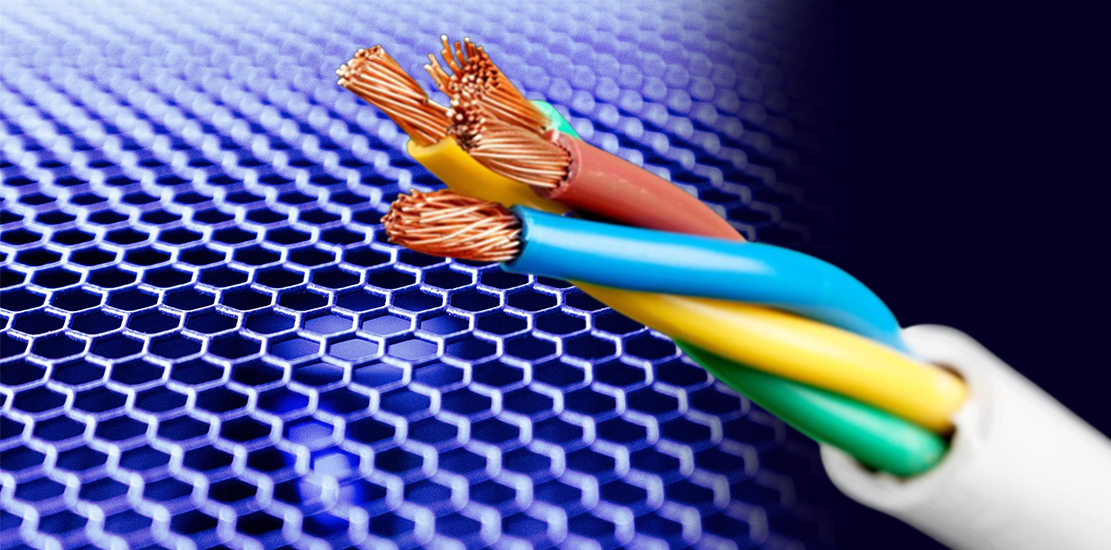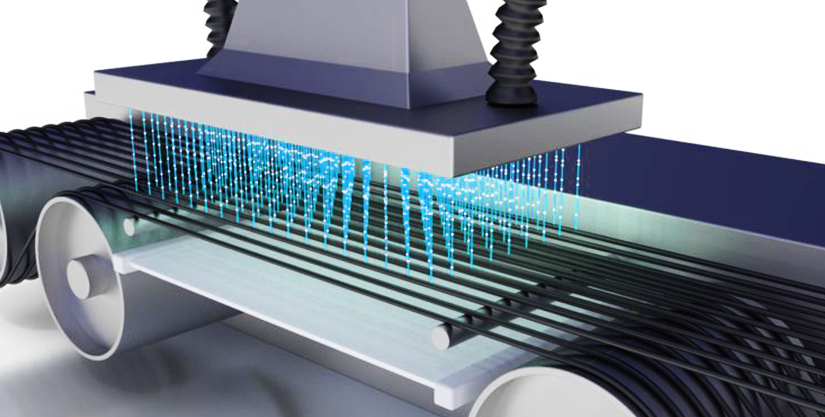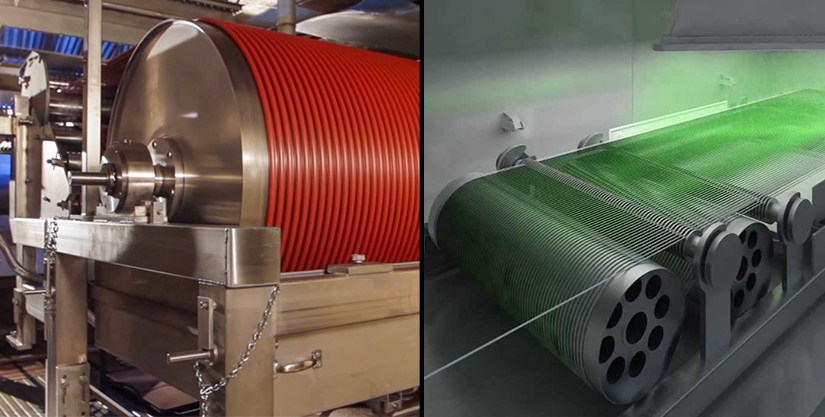
Wire and Cables Crosslinking
Crosslinking of wires and cables has become significant in the cable industry due to an increase in the life and performance of wires and cables in contrast to conventional wires and cables. Crosslinking of polymers alters their physical properties, increasing their everyday utility.
Crosslinking brings numerous benefits to wires and cables by increasing their life, high-temperature stability, high current carrying capacity, and other physical properties. Due to these advantages, crosslinked wires and cables are in demand in various sectors, power, railways, solar power, nuclear power, defense, etc.
Some popular crosslinking methods used across the industry are chemical crosslinking, electron beam crosslinking, and moisture crosslinking. The usage of Electron beam technology is rising among cable manufacturers due to the physical, mechanical, thermal, and chemical advantages it brings to E-beam crosslinked wires and cables.
What is Wire and Cable Crosslinking?
Crosslinking is the process of creating polymer chains through cross-links. It forms a three-dimensional polymer network where molecules join to form a new non-meltable polymer system. The polymer chains lose their ability to move as individual chains, reducing the melting property.
Crosslinking wires and cables help improve thermal, chemical, barrier, impact wear, and other mechanical properties. It helps modify the specific material, makes it more reliable, and longer-lasting, and increases its overall resistance properties. Crosslinking of cables increases their current carrying capacity and is suitable for a continuous operation at 120 degrees Celsius.
Methods used for Wire and Cables Crosslinking

The primary methods used for crosslinking wires and cables are Chemical, Irradiation, and Moisture crosslinking.
Chemical Crosslinking
The chemical crosslinking method uses heat and pressure with the chemical polymer to create a crosslink bond. The wire and cables pass through a long-pressurized tube, heated by steam or nitrogen, known as a continuous vulcanizing line. The chemical crosslinking of rubber cables is known as vulcanization and gets processed by a reaction between the polymers and a crosslinking agent through heat induction.
The disadvantage of the chemical crosslinking method is the residual peroxides in the polymer. The peroxides impede the dielectric and several other properties of the material. It limits the chemically crosslinked wires to have only a 125 to 150 degrees Celsius rating. The technology also requires a paper separator placed between the conductor and material to stop the insulation from pushing between the conductor’s strands.
Irradiation Crosslinking
Unlike chemical crosslinking, irradiation technology does not need stream, pressure, heat, or peroxide chemicals. The methods do not use a paper separator as no heat or pressure forces the material between the conductor’s strands.
E-beam is the irradiation crosslinking method used for wire and cable insulation and jacketing. Compared to thermal or chemical crosslinking, the E-beam method is fast, controllable, and economical. The accelerated beam produces ionizing energy, resulting in a three-dimensional un-melted polymer network.
For smaller wires, a smart electron beam crosslinking has got introduced. It is a shelf-shielded E-beam that allows an easy installation in an existing facility. The E-beam accelerator and wire handling system gets integrated into one system managed by a single PLC-based control system. Wires and cables are wound on reels and fed into E-beam and then undergo electron beam treatment and rewound onto take-up reels. The system can handle wires with small cross-sections and is easily installed anywhere in an existing facility.
Moisture Crosslinking
The two types of moisture crosslinking are popular, the Monosil technique and Sioplas technique. The Monosil technique is a conventional extrusion process with a single-step mixture of vinylsilane-peroxide, crosslinking catalyst, and antioxidant into a polyolefin compound.
Sioplas technique is a two-step process. First, polyethylene is grafted with a mixture of vinylsilane and peroxide to obtain a crosslinked polyethylene. Then, the material gets processed directly or stored in dry conditions for several months.
The moisture-cures the final product by water bath or steam sauna in both these moisture crosslinking methods. Other methods of crosslinking include salt cure and hot air vulcanization.
Electron Beam Crosslinked XLPE and PVC Sheath Cables

The selection of the appropriate Crosslinking method depends on the volume, as the number of polymers crosslinked using chemical and moisture crosslinking technology is restricted. Through E-Beam technology, a wide range of polymers can be commercially crosslinked.
The EB crosslinked wires and cables are used for power applications, building PVC wires, railways, defense, solar power, wind energy, and nuclear power. PVC cables or wires used in building and for power transmission can get crosslinked using EB technology only.
The new generation EB-linked power cables need a special polymeric compound and its extrusion onto the cable and EB irradiation crosslinking. It requires an accelerator of variable energy 1 to 3 MeV with the power of 100 kV to crosslink these specialty power cables. A suitable handling system is essential to uniformly crosslink cables, varying from small sizes 0.5 mm to 500 sq. mm, having a maximum diameter of up to 60 mm, and sector-shaped or circular conductors.
XLPE insulated cables crosslinked with EB irradiation are suitable for continuous operation at 120 degrees Celsius. The inner and outer sheath of these cables are specially formulated PVC and suitable for 105 degree-Celsius and crosslinked using an e-beam up to a diameter of 35mm. These cables can be armored and unarmoured. The advantage of e-beam crosslinked XLPE cables includes increased life, 120-degree Celsius temperature rating, the current carrying capacity of about 11 percent more than chemical crosslinked XLPE cables, etc.
EB crosslinked PVC building wire is superior to conventional PVC building wire in terms of volume resistivity and has 50 percent more current carrying capacity than same wire size. It has improved life, excellent resistance to flammability, and reduced smoke and acid emission.
Advantage of Crosslinked Wires and Cables
Crosslinking of wires and cables offers safety and several other advantages contributing to a greener environment. Some of them are listed down.
Reduces Short-Circuit of Cables
Cross-linked polymers can withstand a temperature of up to 250 degree-Celsius. The increase in melting temperature reduces the chances of immediate short-circuit in areas like elevators, large public and commercial buildings, theatres, stadiums, etc.
Reduction in Wire or Cable Damage
An increase in mechanical strength reduces the risk of damage die mechanical strength, cut-through, short-circuits, and electrical sparking.
Increased Oil and Fuel Resistance
The crosslinked cables can work for a longer duration during immersion due to increased oil and fuel resistance.
Improved Abrasion Resistance
Improved abrasion resistance can reduce wall thickness and save raw materials, space, energy, and weight. Low weight helps in low energy consumption in trains, ships, planes, etc.
Reduction in Flame, Smoke, and Pollution
Crosslinked wires do not drip in case of fire, less spread flame, less smoke, and leads to less pollution.
Crosslinking is Crucial to Enhance the Performance Standards of Wires and Cables

The increased demand for high-performance standard wires and cables has made crosslinking a vital technological process in wires and cables manufacturing. Gloster Cables, a leading wire and cable industry, effectively implements crosslinking technology in its manufacturing process to provide high-performing wires and cables to its clients. The list of crosslinked wires and cables manufactured by Gloster Cables includes Flame retardant wires, flame retardant low-smoke, and low-halogen cables, e-beam crosslinked XLPE cables, etc.
CONTACT US